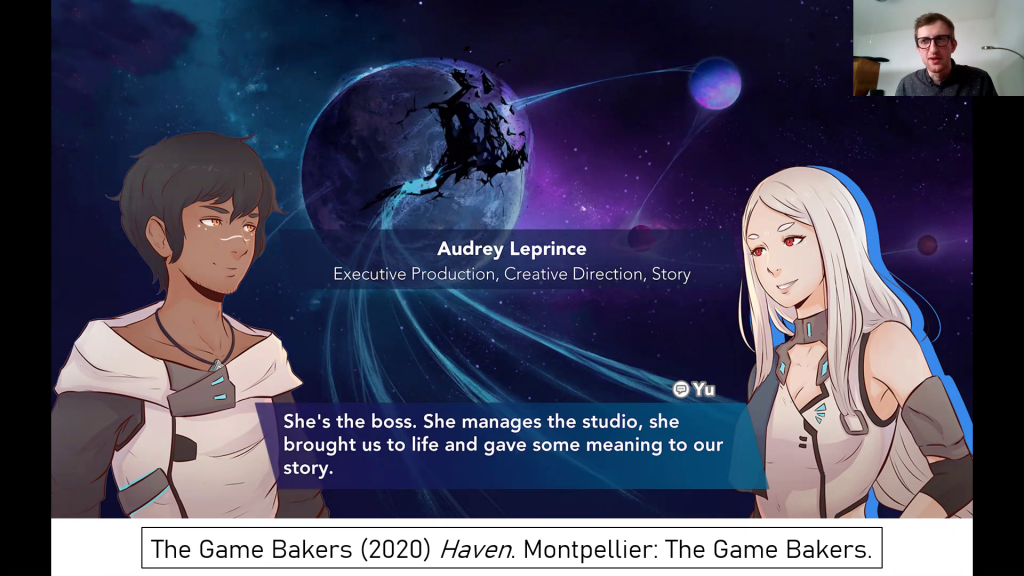
SCMS 2021: Below-the-line Work and In-Game Credits
At the 2021 Annual Conference of the Society for Cinema and Media Studies (SCMS), which took place remotely between March 17-21, I presented a paper Para-Industrial Construction of Videogame Authorship through In-Game Credits as part of a panel H02: Videogame Industries and Below-the-Line Work. In this talk, I have looked at in-game credits as a manifestation of the para-industry, a concept developed by John Thornton Caldwell and defined as “an economic and cultural–industrial interface woven together by socio-professional media communities, through trade narratives, ritualized interactions and conventionalized self-representations.” Across cultural industries, credits are used to higlight authorship and creative contribution, establishing above-the-line and below-the-line hierarchies. In the video game industry, the specialized press has many times reported on the misattributions and omissions in in-game credits and scholars and developer organizations alike have noted the lack of crediting standards. To explore this so far understudied area of video game production, I have analyzed 100 games published between 2016-2020, focusing on three sectors: AAA, indie, and freemium games as service. My preliminary findings confirm the lack of crediting standards and uncover often paradoxical and contradictory approaches to credit attribution that both subvert and reinforce above-the-line and below-the-line hierarchies.
The screenshot from the talk shows the first shot of Haven‘s unusually detailed in-game credits that are accessible from the main menu (the game has a different end credits sequence when the player beats the game). Haven’s two protagonists metaleptically comment on the duties of individual developers, who are ordered according to their leadership and creative roles.

+ There are no comments
Add yours